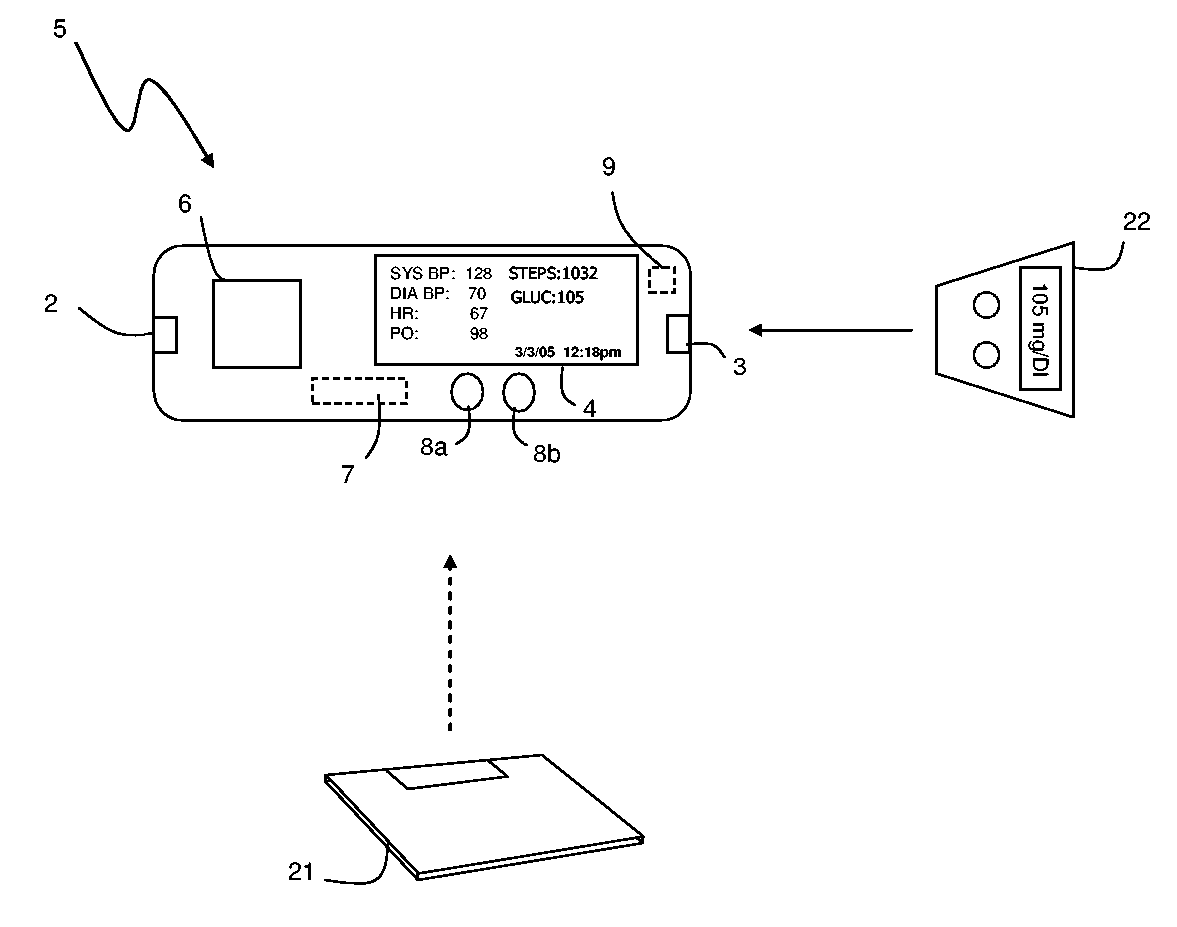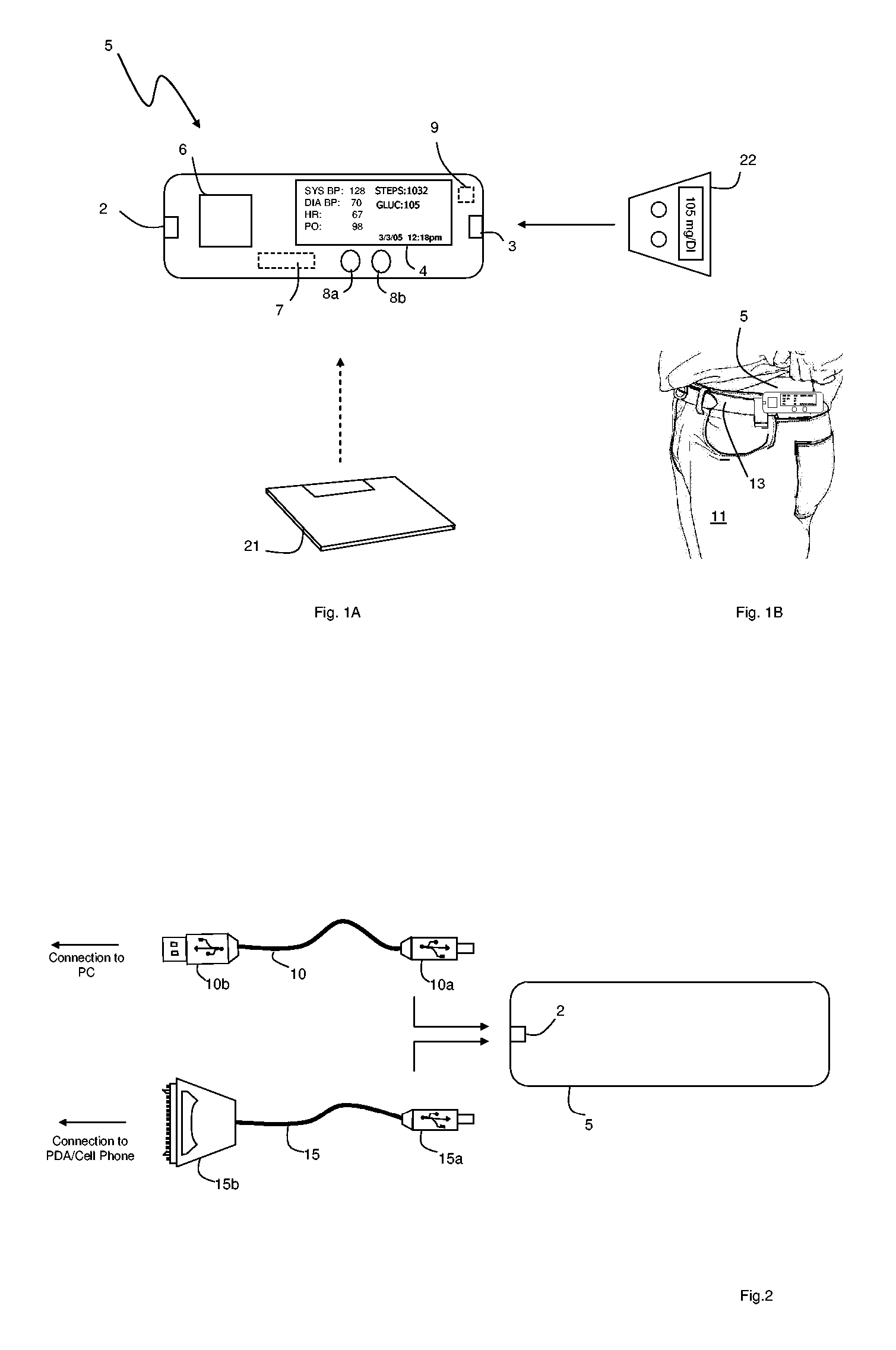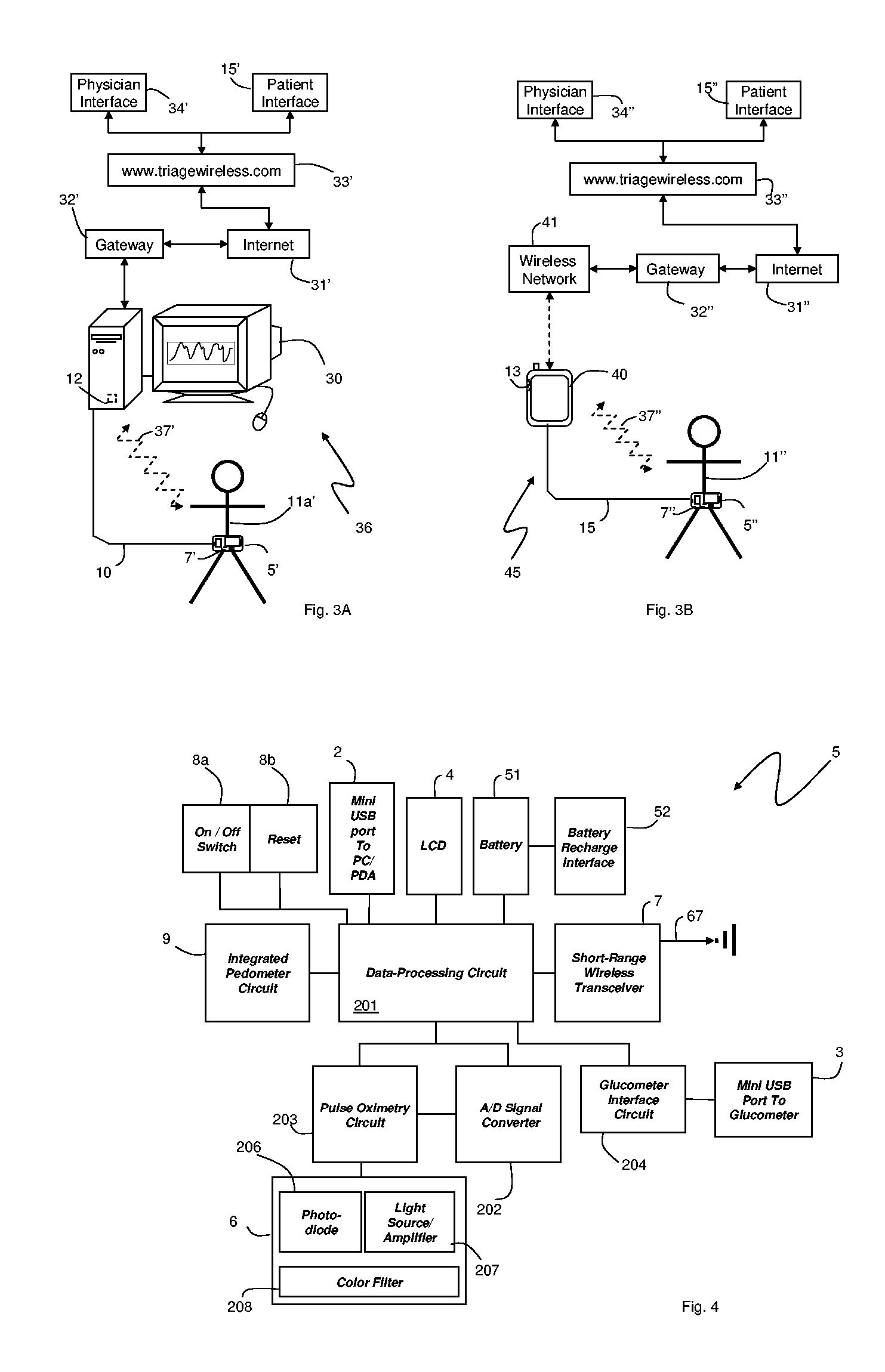Small-scale, vital-signs monitoring device, system and method
a monitoring device and vital sign technology, applied in the field of medical devices, can solve the problems of affecting blood pressure, reducing the accuracy of measurement, motion-related artifacts, etc., and achieve the effects of small scale, rapid measurement of health-related indicators, and easy monitoring of this property with minimal discomfor
- Summary
- Abstract
- Description
- Claims
- Application Information
AI Technical Summary
Benefits of technology
Problems solved by technology
Method used
Image
Examples
Embodiment Construction
[0018]FIGS. 1A and 1B show a portable, small-scale, vital-sign monitor 5 that measures information such as blood pressure, pulse oximetry, heart rate, glucose levels, calories burned, steps traveled, and dietary information from a patient 11. The monitor 5, typically worn on the patient's belt 13, features: i) an integrated, optical ‘pad sensor’6 that cufflessly measures blood pressure, pulse oximetry, and heart rate from a patient's finger as described in more detail below; and ii) an integrated pedometer circuit 9 that measures steps and, using an algorithm, calories burned. To receive information from external devices, the monitor 5 also includes: i) a serial connector 3 that connects and downloads information from an external glucometer 22; and ii) a short-range wireless transceiver 7 that receives information such as body weight and percentage of body fat from an external scale 21. The patient views information from a liquid crystal display (LCD) display 4 mounted on the monito...
PUM
 Login to View More
Login to View More Abstract
Description
Claims
Application Information
 Login to View More
Login to View More - R&D
- Intellectual Property
- Life Sciences
- Materials
- Tech Scout
- Unparalleled Data Quality
- Higher Quality Content
- 60% Fewer Hallucinations
Browse by: Latest US Patents, China's latest patents, Technical Efficacy Thesaurus, Application Domain, Technology Topic, Popular Technical Reports.
© 2025 PatSnap. All rights reserved.Legal|Privacy policy|Modern Slavery Act Transparency Statement|Sitemap|About US| Contact US: help@patsnap.com



